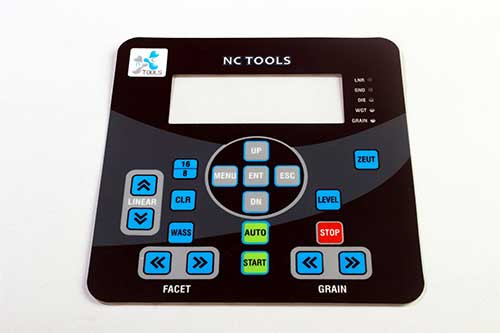Comprehending How Graphic Overlays Job to Enhance Your Imaginative Tasks
Graphic overlays serve as an essential part in the realm of creative jobs, boosting both aesthetic interaction and audience engagement. The effective assimilation of these overlays calls for mindful consideration of design concepts and objectives.
What Are Graphic Overlays?
Graphic overlays are visual aspects that are positioned on top of a base picture or interface to improve communication and individual experience. They serve different purposes, consisting of supplying added details, leading user communication, and boosting visual appeal. Usual applications of graphic overlays can be found in digital interfaces, marketing, and academic products.

Graphic overlays are frequently developed utilizing style software program, permitting developers to adjust openness, dimension, and color to achieve the wanted result. Understanding just how to efficiently implement graphic overlays is vital for designers intending to raise their innovative jobs.

Advantages of Utilizing Graphic Overlays
Using graphic overlays can substantially enhance the effectiveness of visual interaction throughout numerous tools. One of the primary advantages is the capacity to communicate complicated information succinctly. By layering graphics, text, and images, overlays help with the presentation of data in an extra absorbable layout, making it much easier for target markets to grasp key concepts promptly.
Additionally, visuals overlays can increase aesthetic appeal, accentuating details aspects within a design. This is especially beneficial in advertising and advertising and marketing, where catching the viewer's passion is vital. The tactical usage of colors, forms, and typography in overlays can develop a cohesive and engaging visual story, boosting brand name recognition.
Additionally, graphic overlays supply adaptability in layout. They permit designers to adjust material for different platforms without starting from scrape, guaranteeing consistency across numerous channels. This flexibility is vital in today's electronic landscape, where content must be maximized for varied gadgets and styles.
Sorts Of Graphic Overlays
When thinking about the different types of graphic overlays, it is necessary to identify their diverse applications throughout different markets. Graphic overlays can be classified mostly into three types: useful, ornamental, and informative.
Practical overlays are made to boost the use of a product. Generally found in electronic devices, these overlays commonly give responsive responses via elevated switches or distinctive surface areas, improving individual interaction. They can additionally act as a protective layer, protecting the underlying components from deterioration.
Ornamental overlays concentrate on aesthetic improvement, permitting brand names to share their identification via vivid designs and customized graphics. These overlays are widespread in packaging, marketing, and point-of-sale products, where visual allure is important for bring in consumers.
Informational overlays, on the other hand, are utilized to share crucial information or guidelines. They can be seen in applications such as signage, individual handbooks, and educational graphics, where clarity and readability are paramount.
Each type of visuals overlay serves an one-of-a-kind purpose, adding to the overall performance of imaginative tasks while addressing particular needs within various sectors. Recognizing these differences is crucial for picking the appropriate overlay for your project.
Best Practices for Application
To ensure the effective execution of graphic overlays, it is important to establish a clear understanding of the project's goals and the specific requirements of the end-users. Begin by carrying out detailed research to identify the target audience and their preferences, as this will notify style selections and capability.
Next, create a thorough plan that lays out the overlay's format, objective, and combination process. This plan must include customer interface factors to consider, making sure that overlays improve instead of block the individual experience - Graphic Overlays. Maintain and take into consideration the visual hierarchy consistency in design aspects, such as shade icons, systems, and fonts, to promote brand name coherence
Evaluating is important; gather comments from description a depictive example of individuals to identify potential concerns and areas for improvement. Repeat on the style based on customer input and performance information. Additionally, guarantee compatibility throughout different gadgets and platforms to maximize ease of access.
Tools for Producing Overlays
Producing efficient graphic overlays requires the right devices to convert layout concepts into functional applications. Various software and platforms are readily available, each customized to particular needs and skill degrees.
Adobe Photoshop and Illustrator are market criteria, providing considerable capabilities for producing and controling overlays. These devices provide sophisticated features such as layer administration, blending modes, and vector graphics, making it possible for developers to develop top quality and complex overlays.
For those looking for an extra user-friendly technique, Canva and Figma are excellent options (Graphic Overlays). Canva's user-friendly user interface enables individuals to produce overlays rapidly utilizing pre-designed design templates, while Figma promotes joint style in real-time, making it suitable for groups
Furthermore, open-source choices like GIMP and Inkscape supply durable performances without the connected costs of proprietary software. These devices enable adaptability in style and can fit different data styles, guaranteeing compatibility across useful content different platforms.

Final Thought
In verdict, graphic overlays offer as effective tools for enhancing imaginative tasks by supplying aesthetic quality, visual allure, and brand consistency. Their varied applications, varying from useful to attractive, highlight their versatility in interaction. Complying with ideal methods and utilizing proper tools guarantees effective execution and maximizes the influence of overlays. By understanding the fundamental concepts and advantages related to visuals overlays, designers can considerably improve the high quality and efficiency of their visual communications.
Graphic overlays serve as a pivotal element in the world of creative jobs, enhancing both visual communication and audience interaction.Graphic overlays are usually created using style software application, permitting designers to manipulate color, dimension, and openness to attain the desired effect.Additionally, graphic overlays can improve visual appeal, drawing attention to particular components within a layout.Additionally, graphic overlays provide versatility in style.In conclusion, graphic overlays serve as effective devices for enhancing innovative tasks by offering visual clarity, visual appeal, and brand name basics uniformity.